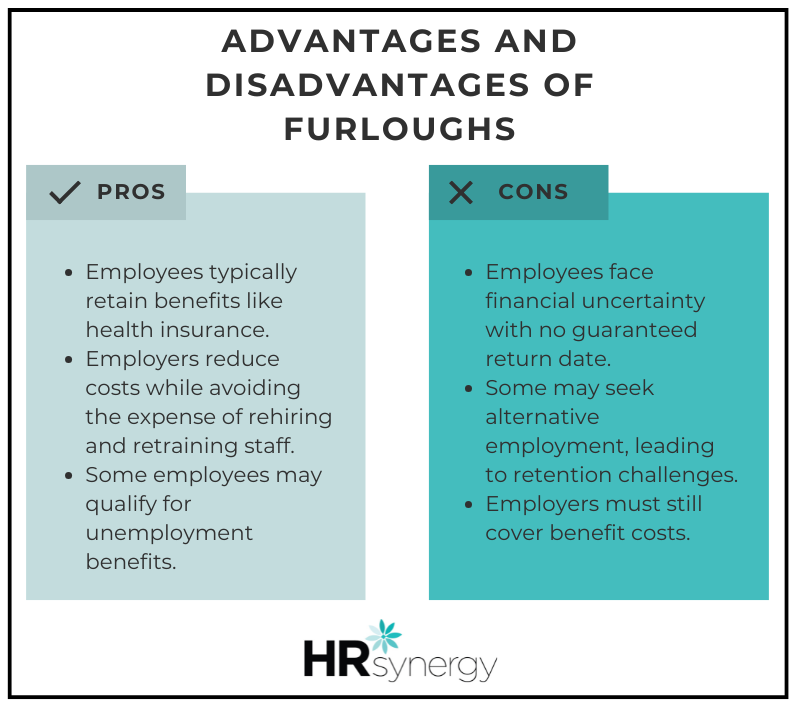No company is immune to financial hardships. Economic downturns, unexpected crises like the COVID-19 pandemic, or shifts in industry demand can force employers to make tough decisions about their workforce. Two common cost-saving strategies are furloughs and layoffs—but while they may seem similar, they have significantly different implications for employees and businesses alike.
Before finding yourself in a position where such decisions must be made, it’s crucial to understand these differences to make informed and compassionate choices.
Advantages and Disadvantages of Each Option

Handling Furloughs vs. Layoffs Effectively
Best Practices for Managing a Furlough
- Supporting Employees in Planning Ahead: Provide a realistic timeline if possible.
- Clarify Employment Restrictions: Ensure employees know they cannot perform any work while furloughed.
- Restrict System Access: Temporarily disable work accounts to prevent accidental violations of labor laws.
Furlough regulations vary by state, so it’s essential to consult with your company’s legal counsel to ensure compliance with relevant laws. Additionally, while both exempt and non-exempt employees can be furloughed, the process differs based on their classification.
Understanding Furloughs for Hourly and Salaried Employees
Hourly (Non-Exempt) Employees: Employers can reduce hours or implement a zero-hour schedule without terminating employment. This was commonly used during the pandemic to retain staff without layoffs.
Salaried (Exempt) Employees: Instead of reducing hours, employers may temporarily cut pay or enforce a full furlough. These employees cannot legally perform any work, even small tasks like emails, without requiring full-day compensation.
Furloughs help businesses manage costs while retaining employees, but they must follow legal guidelines for each worker type.
Best Practices for Managing Layoffs
- Understand Legal Requirements: Review laws like the WARN Act and state-specific regulations.
- Offer Severance if Possible: While not required, severance can ease employees’ transitions.
- Communicate with Sensitivity: Be transparent about why layoffs are happening and provide resources for affected employees.
- Support Remaining Employees: Address concerns, maintain morale, and outline a recovery plan.
Final Thoughts
Both furloughs and layoffs can be difficult decisions, but when managed thoughtfully, they can minimize long-term damage to both employees and the organization. Whether you’re an HR leader or an executive making these tough calls, clear communication, legal compliance, and a commitment to employee well-being are key to navigating workforce changes effectively.

